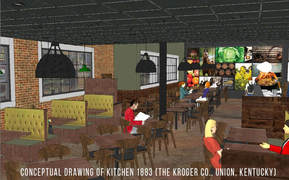 Starting a few months ago with Amazon announcing the purchase of Whole Foods, I have been taken by the blood-letting Wall Street has bestowed across the industry. In fact; the financial punishment for most in the retail space since this announcement. My personal disclaimer on this post: I am not a retail operator, nor an investment banker. But I am a successful supplier of consumer goods to retail. Durable goods, not consumable goods (drinks, chips, etc.). My thoughts are not to claim supreme answers, but more to offer thoughts from a 10,000 foot view with 3 thoughts. 1. Stick To Your Knitting Kroger Co. (KR) has become the poster-child for what Amazon could do to the grocery industry by acquiring Whole Foods. Kroger could do itself good by focusing on making their business (stores and digital) the top-of-mind consumer destination. With 2,800 stores, multiple store front brands, spanning 35 states, Kroger has a great platform to do mind-blowing things. Amazon’s Whole Foods has some 470 stores and at some point will leverage the power of the digital platform. I believe Kroger could make some very progressive moves to not only hold share, but grow dramatically. I do not discount the power and prowess in operational and supply chain proficiency Amazon has proven. They meet the consumer “right where the customer wants to be”. Amazon will certainly carve out their fair share of the grocery market. About a month ago, Kroger announces they will launch a restaurant business called Kitchen 1883. Hmmm. Is it me, or does that seem like a lack of focus? The first prototype is a stand-alone store. But even if the thought is to integrate a restaurant into stores, is that what the consumer wants? Another restaurant, particularly one inside of a Kroger? Kroger should stick to grocery and take advantage of building a compelling digital model and enhance the in-store experience to serve the consumer. 2. Meet The Competition Head On Things change. Consumer likes and dislikes change. Technology has proven to be a great enabler. Grocery competitors are making moves to prepare for the future. Walmart buys Jet.com in 2016, and recently Parcel, which has a model for rapid delivery to consumer’s front door. Both significant in Walmart’s goal to compete with fury in the digital retail space. In the pure play grocery space, Albertsons announces the purchase of the meal-kit delivery service, Plated. This is very logical for grocery to have a hand in the meal kit business. Experts expect this food home delivery service sector to grow more than 70% in the next 5 years. With all of this recent activity, Kroger showing no signs of making a correction in course. 3. And, It’s Not Going To Get Any Easier The slim margins in the grocery business make things tough, no doubt about it. As competition heats up margins will be under increased pressure. Add to the mix the entry and expansion in the US market of two powerful German grocery retailers - Aldi and Lidl. The pressure on traditional grocers will be intense. These are serious competitors and have the balance sheet and competitive will to gain significant market share. The evolution of how the grocery industry is going to take shape will be interesting. There will be winners and losers. I am not convinced Amazon will rule the world, but they will put points on the board in grocery. The losers – some will falter. I have visions of how Kmart could not shift to compete with Walmart in the early days. Where is Kmart today?  David Kearsley Business leader and continuous learner in consumer durable products sold through various partner channels; retail, capital goods, infrastructure product. www.davidkearsley.com
0 Comments
Your comment will be posted after it is approved.
Leave a Reply. |
David KearsleySenior Sales, Marketing & Business Development Executive Archives
September 2019
Categories |

 RSS Feed
RSS Feed
